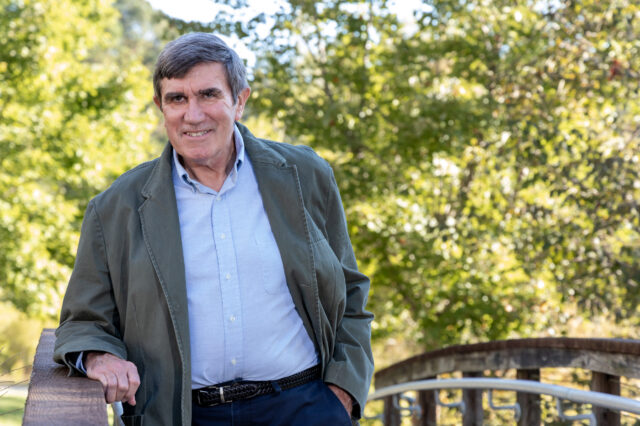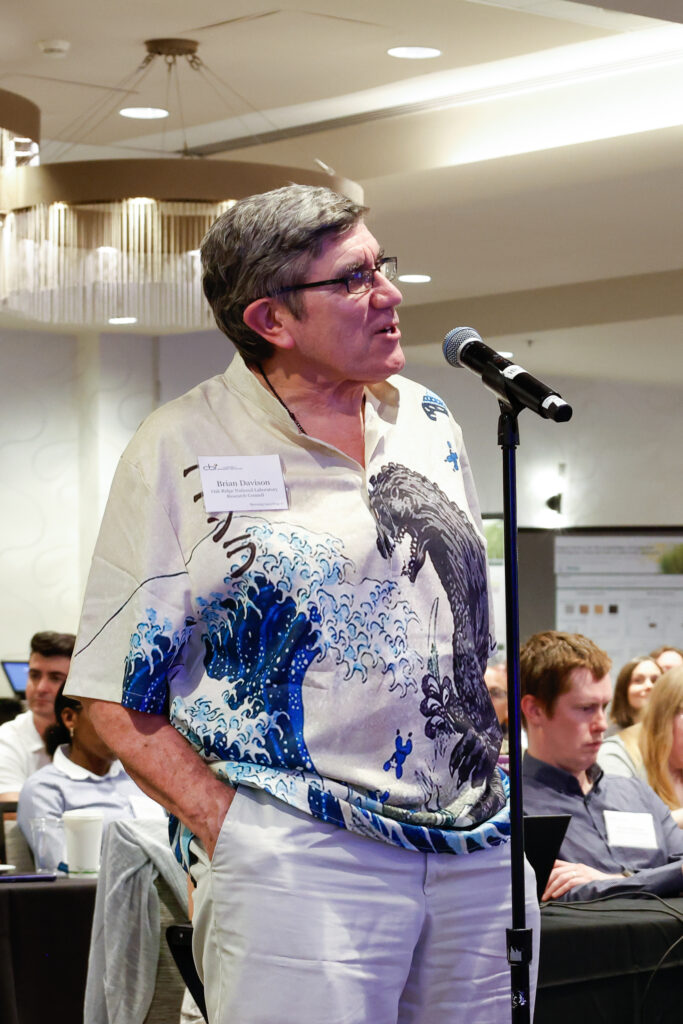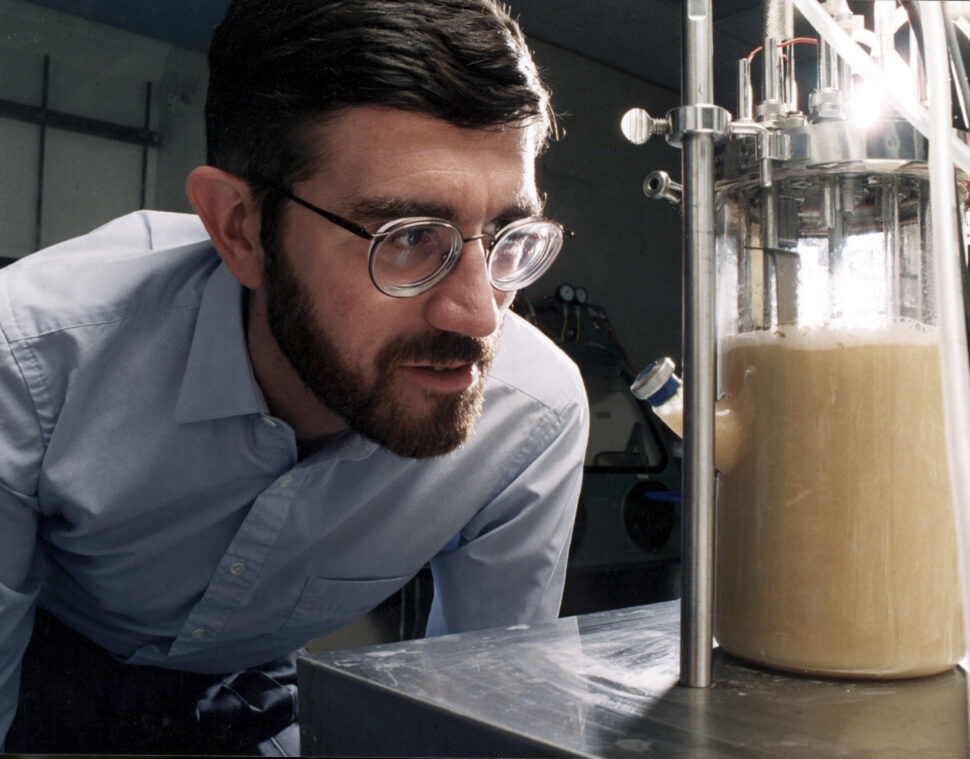
Brian Davison is marking 40 years of impact and leadership at the Department of Energy’s Oak Ridge National Laboratory, where his scientific discoveries have led to real-world success for the nation’s bioeconomy. Equally remarkable has been his dedication to mentoring colleagues, both individually and in teams.
Davison, ORNL’s chief scientist for biotechnology and industrial liaison for DOE’s Center for Bioenergy Innovation, arrived at the lab in 1985 with a doctorate in chemical engineering from the California Institute of Technology. Over the next four decades, he progressed from staff biochemical engineer in the lab to group leader to division director and chief science officer for two DOE Bioenergy Research Centers at ORNL, earning the distinction of Corporate Fellow along the way.
His discoveries have centered on cost-efficient biological pathways to break down and convert plant biomass into valuable fuels, chemicals and materials to support U.S. energy security and manufacturing. Among his top translational success stories is the approval of a biomass-derived gasoline blendstock based on a low-cost technology developed by Davison and ORNL colleagues and expanded in partnership with Vertimass LLC. He recently detailed his career and leadership in scientific discovery and scaleup in chemical and biological engineering at ORNL on the Molecular Podcast.
Davison is highly sought after as a scientist, thought leader, project reviewer and principal investigator, known for successfully guiding the pursuit of new science opportunities with humor, patience and rigor. He discusses his career milestones and lessons learned along the way in the following Q&A.

Q: What are some of the lessons learned from your years working at ORNL?
A: I have certain core principles I’ve learned over the years and keep in mind. A key one is: Work with the end in mind. Considering how things might get used is important from the very beginning of a project. You can’t accomplish a full-grown, mature process at lab scale, but you can think it through and conduct your research accordingly. Ask yourself, how hard will it be to scale up what I’ve developed to make it useful? Some of the barriers to commercialization may not be the most fascinating science, but they remain critically important.
Q: What are some of the ‘a-ha’ moments you’ve experienced with your science?
A: One of those moments for me was about 10 years ago, when we were testing plant material in a neutron beam to analyze a biomass pretreatment. As the lignin — the natural polymer that gives plants their rigidity and is difficult to overcome when breaking down biomass — reached the temperature at which it melts and transitions out of the biomass, it would immediately start self-aggregating again, making the produced lignin unusable. We discovered that lignin aggregation was not driven by solubility principles as expected, but by entropy. The lignin underwent significant changes, enough to break molecular bonds and form new ones, increasing overall disorder. The fact that we were wrong wasn’t defeating, it was exciting. It led us to different solvents that we’re working with today to preserve the lignin structure while not letting it aggregate into, essentially, little balls of glue.
That experience led to another lesson: Keep thermodynamics in the back of your mind.I’ve seen over and over again in my career that at a certain level, thermodynamics drives everything — even biology. My interpretation of the three Laws of Thermodynamics: 1) you can’t get something for nothing; 2) you can’t break even; and 3) there is a bottom. Life still follows thermodynamics; it only looks like it cheats. In working to resolve the lignin challenge, we realized that lignocellulosic plant cell walls are not at a thermodynamic minimum. We tend to think of a piece of wood as just sitting there and being stable, but it was laid down in a highly structured way like a laminate, creating constraints and barriers. That fact informs how we deal with biomass and how important plant cell wall synthesis is.

Q: In your years working as a project lead and as chief science officer for multi-institutional bioenergy research centers, what have you learned about collaboration and team-building?
To build an effective team, you should have a sense of what’s needed, but be open to listening to what everyone else is thinking. If you’re the lead, you should have a vision but also be willing to be wrong and change it — to shift and adapt. You should also be intentional “above and below.” Many people think of building relationships with their peers and with the people they lead. But you also need to build trust and communication channels with the people above you, including supervisors and key project stakeholders and sponsors. Keep them in the loop.
It’s been an honor to help colleagues navigate success at the lab over the years. And I’ve never felt lessened by giving others ample credit. One piece of advice I’d give to anyone who feels even a hint of imposter syndrome is to reach out to colleagues. Trusted feedback from mentors and coworkers will accurately reflect your true abilities if you don’t trust your own opinion of yourself.
Q: What’s the best strategy you’ve learned for success at a national lab?
Don’t be afraid of hard questions.Communicating your science successfully is essential. I credit my mother for helping shape that mindset. Trained as a journalist, I’d tell her what I’ve been working on and she’d ask in-depth follow-up questions. Don’t shy from asking or answering tough questions. One of the things that brings me joy is when I can ask a question that helps someone else crystallize their thinking. Do everything you can to predict the questions you might get asked. Find the people who will ask those hard questions. You want the harshest critiques to come from your colleagues beforehand; not during your presentation.
Q: What is something you’re most proud of in your time at ORNL?
A: One of the themes I’ve pursued in my work is driving science into application. It may sound trite, but what I’d like to be remembered for is helping push forward good science that actually makes an impact. You should always put that impact in clear, plain terms. And underneath that, again, is the practice of being unafraid to ask and answer hard questions every day.
